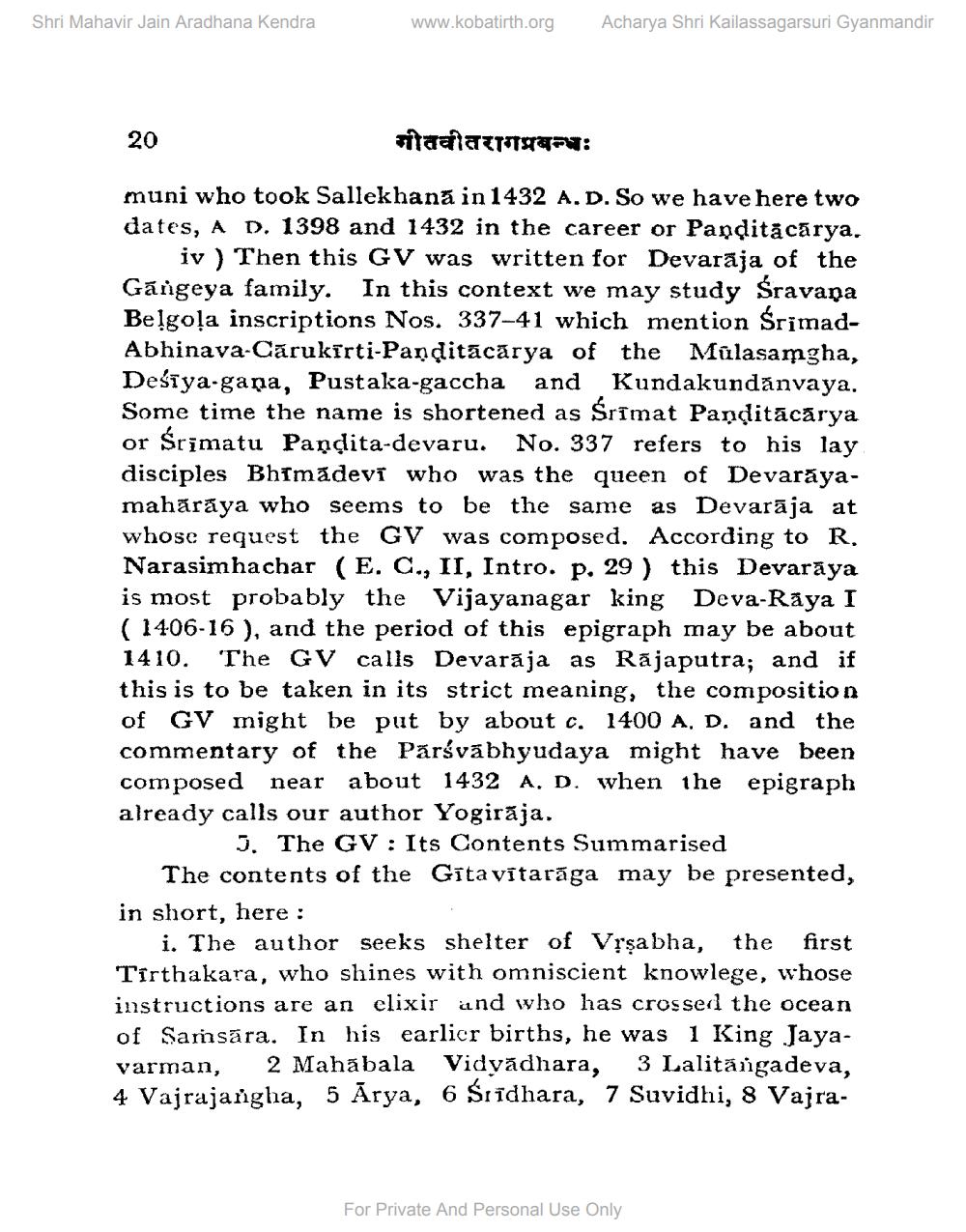________________
Shri Mahavir Jain Aradhana Kendra
www.kobatirth.org
20
Acharya Shri Kailassagarsuri Gyanmandir
गीतवीतरागप्रबन्धः
muni who took Sallekhana in 1432 A. D. So we have here two dates, A D. 1398 and 1432 in the career or Panditācārya. iv) Then this GV was written for Devaraja of the Gangeya family. In this context we may study Śravana Belgola inscriptions Nos. 337-41 which mention ŚrimadAbhinava-Carukīrti-Panditācārya of the Mulasamgha, Desiya-gana, Pustaka-gaccha and Kundakundanvaya. Some time the name is shortened as Śrīmat Panditācārya or Śrīmatu Pandita-devaru. No. 337 refers to his lay disciples Bhimadevi who was the queen of Devarayamahārāya who seems to be the same as Devaraja at whose request the GV was composed. According to R. Narasimhachar (E. C., II, Intro. p. 29) this Devaraya is most probably the Vijayanagar king Deva-Raya I (1406-16), and the period of this epigraph may be about 1410. The GV calls Devaraja as Rajaputra; and if this is to be taken in its strict meaning, the composition of GV might be put by about c. 1400 A. D. and the commentary of the Parśvābhyudaya might have been composed near about 1432 A. D. when the epigraph already calls our author Yogiraja.
J. The GV: Its Contents Summarised
The contents of the Gitavītaraga may be presented, in short, here:
i. The author seeks shelter of Vṛṣabha, the first Tirthakara, who shines with omniscient knowlege, whose instructions are an elixir and who has crossed the ocean of Samsara. In his earlier births, he was 1 King Jayavarman, 2 Mahabala Vidyadhara, 3 Lalitangadeva, 4 Vajrajangha, 5 Arya, 6 Sridhara, 7 Suvidhi, 8 Vajra
For Private And Personal Use Only




